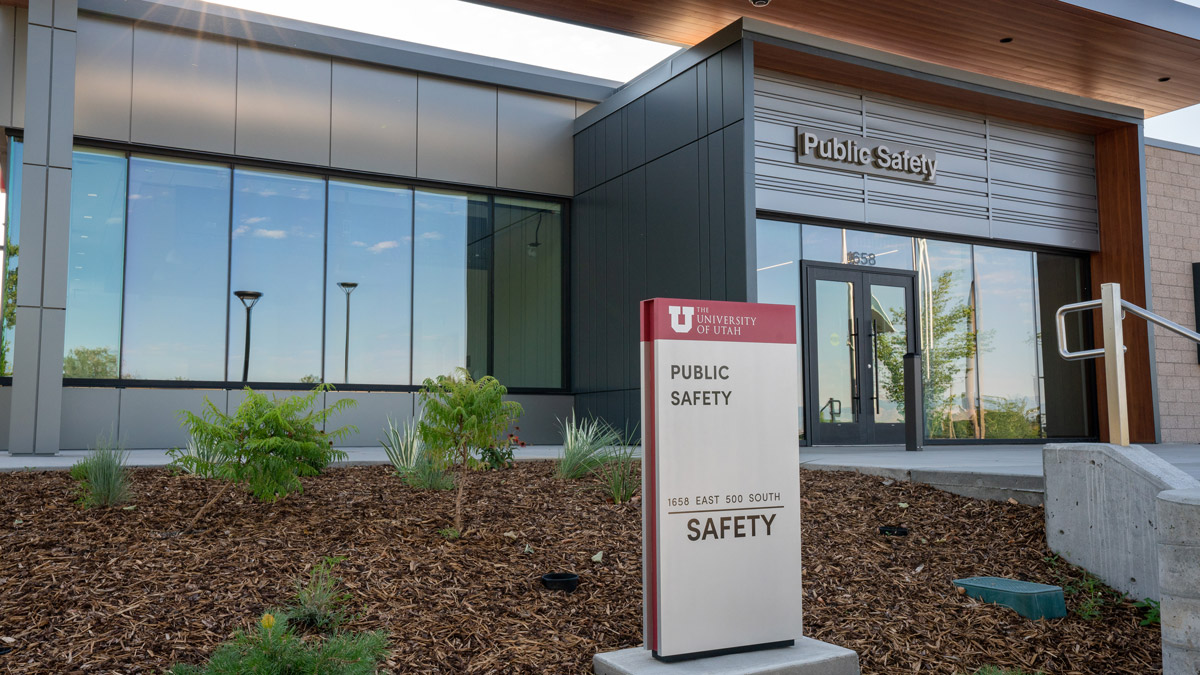

When former University Police Detective Heather Sturzenegger met with a victim-survivor, she’d haul the office couch and lamps into the Public Safety Department’s sole questioning room in an attempt to make the space more comfortable.
A new, $14.5 million, 25,000-square-foot Department of Public Safety Building which opens to the public on Nov. 9 means that furniture shuffle is no longer necessary.
“This is awesome that we don’t have to do that anymore,” Sturzenegger said. “It makes a huge difference.”

After nearly 60 years of using a repurposed World War II Army barracks as its operations headquarters, the University of Utah Department of Public Safety has moved to a new state-of-the-art facility designed to foster increased collaboration between the community and the department. This building is one of the many recommendations for safety improvements made by an independent review team after the tragic death of U student Lauren McCluskey in October 2018.
Located at 1658 E. 500 South, the building provides the space necessary for the department’s units to work together in new ways. Formerly housed in multiple locations across campus, university police, crime and victim-survivor advocates, campus security, emergency communications and emergency management will all share physical space in the new building, along with on-site IT specialists. Emergency management will continue to maintain its space in the S.J. Quinney College of Law.
In addition to the dedicated “soft” questioning room for victim-survivors, other significant updates to the building include:
- Secure entrance with 24/7 public access
- Large classroom space open to the public
- Kennels for police dogs
- Secure holding and questioning rooms
- Increased dispatch capacity and ability to encrypt public safety radio frequency
- Improved access to 500 South and the ability to turn both right and left onto the street

“Fulfilling the mission of the Department of Public Safety requires continual improvement,” said Keith Squires, the university’s chief safety officer and director of public safety. “This new building provides our team with the technology updates we need to be successful in our work in the modern world. And the increased space gives us the ability to work together as a department in new and innovative ways, while collaborating with the community we serve.”
The public is invited to tour the new safety building on Nov. 9 at 1 p.m.
